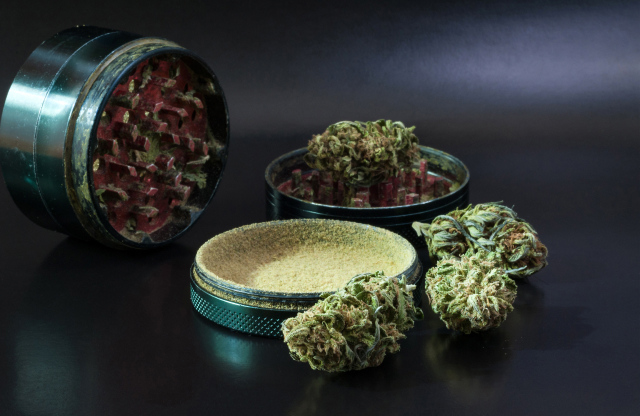What is a grinder? A grinder is a versatile power tool used for cutting, grinding, polishing, and sanding various materials. This guide covers how to use a grinder safely and effectively on metal, concrete, wood, and more. It also explains grinder techniques, angle grinder uses, metal grinding, concrete grinding, wood grinding, how to choose a grinder, grinder attachments, grinder maintenance, and die grinder tips.

Image Source: embr.us
Choosing the Right Grinder
Picking the right grinder is the first step. Different types suit different jobs.
Angle Grinders
Angle grinders are common. They are good for many tasks.
- Sizes: Usually 4.5 to 9 inches.
- Uses: Cutting metal, grinding welds, removing rust.
- Power: Corded or cordless.
- Pros: Versatile, powerful.
- Cons: Can be heavy.
Die Grinders
Die grinders are smaller. They are good for detail work.
- Sizes: Smaller than angle grinders.
- Uses: Grinding in tight spots, shaping, polishing.
- Power: Air or electric.
- Pros: Precise, easy to handle.
- Cons: Less powerful.
Bench Grinders
Bench grinders are fixed. They are mounted to a workbench.
- Sizes: Varies.
- Uses: Sharpening tools, shaping metal.
- Power: Corded.
- Pros: Stable, good for sharpening.
- Cons: Not portable.
Choosing the Right Size and Power
The job size matters. Bigger jobs need more power. Small jobs need more control.
| Grinder Type | Best For | Power Source | Size |
|---|---|---|---|
| Angle | Cutting, grinding | Corded/Cordless | 4.5-9 inches |
| Die | Detail work, tight spaces | Air/Electric | Small |
| Bench | Sharpening, shaping | Corded | Varies |
Getting Ready to Grind
Safety comes first. Always wear the right gear.
Safety Gear
- Safety Glasses: Protect your eyes from flying debris.
- Gloves: Protect your hands.
- Hearing Protection: Grinders are loud.
- Dust Mask: Protect your lungs from dust.
- Apron: Protect your clothes.
Work Area Setup
- Clear Area: Remove clutter.
- Good Lighting: See what you are doing.
- Secure Workpiece: Use clamps to hold the material.
- Fire Safety: Keep a fire extinguisher nearby, especially when grinding metal.
Mastering Grinder Techniques
Good grinder techniques make work easier. They also make it safer.
Basic Grinding
- Angle: Hold the grinder at a slight angle to the material.
- Pressure: Use steady, even pressure. Don’t push too hard.
- Movement: Move the grinder in a sweeping motion.
- Overlap: Overlap each pass slightly.
Cutting
- Cutting Disc: Use a thin cutting disc.
- Straight Line: Follow a straight line.
- Slow Speed: Let the disc do the work. Don’t force it.
- Secure Material: Make sure the material is held tight.
Polishing
- Polishing Pad: Use a polishing pad.
- Low Speed: Use a low speed.
- Polishing Compound: Apply polishing compound.
- Light Pressure: Use light pressure.
Metal Grinding
Metal grinding needs care. Different metals need different methods.
Steel
- Grinding Wheel: Use a grinding wheel for steel.
- Medium Speed: Use a medium speed.
- Cooling: Let the metal cool down often to avoid overheating.
Aluminum
- Flap Disc: Use a flap disc for aluminum.
- Low Speed: Use a low speed to avoid clogging the disc.
- Lubrication: Use lubricant to keep the disc clean.
Stainless Steel
- Grinding Wheel: Use a grinding wheel made for stainless steel.
- Low Speed: Use a low speed to avoid heat buildup.
- Avoid Contamination: Keep the grinding wheel clean to avoid rust.
Concrete Grinding
Concrete grinding makes a lot of dust. Take extra safety measures.
Safety
- Respirator: Wear a good respirator.
- Dust Collection: Use a vacuum to collect dust.
- Eye Protection: Wear safety glasses or a face shield.
Grinding Wheel
- Diamond Wheel: Use a diamond grinding wheel.
- Water: Use water to keep the dust down and cool the wheel.
- Even Pressure: Use even pressure.
Wood Grinding
Wood grinding is different from metal. It needs different attachments and methods.
Grinding Wheel
- Sanding Disc: Use a sanding disc.
- Low Speed: Use a low speed to avoid burning the wood.
- Light Pressure: Use light pressure.
- Move Constantly: Keep the grinder moving to avoid gouging.
Shaping
- Carbide Burrs: Use carbide burrs for shaping wood.
- Slow Speed: Use a slow speed.
- Control: Take small amounts of material off at a time.
Fathoming Grinder Attachments
Grinder attachments make the tool more useful.
Grinding Wheels
- Types: Different grits for different jobs.
- Uses: Grinding metal, removing material.
Cutting Discs
- Thin Discs: For cutting metal.
- Diamond Discs: For cutting concrete and tile.
Flap Discs
- Uses: Sanding, blending, and finishing metal.
- Benefits: Long lasting, smooth finish.
Wire Wheels
- Uses: Removing rust, paint, and scale.
- Safety: Wear eye protection. Wires can come loose.
Polishing Pads
- Uses: Polishing metal, stone, and plastic.
- Compounds: Use with polishing compounds for best results.
Backing Pads
- Uses: Holding sandpaper discs.
- Types: Different sizes and stiffness.
Carbide Burrs
- Uses: Shaping and carving wood, metal, and plastic.
- Shapes: Different shapes for different tasks.
Grinder Safety Tips
Grinder safety is very important. Follow these tips to stay safe.
- Read the Manual: Know your grinder.
- Inspect Before Use: Check for damage.
- Use the Right Wheel: Match the wheel to the job.
- Secure the Wheel: Make sure the wheel is tight.
- Wear Safety Gear: Always wear safety glasses, gloves, and hearing protection.
- Don’t Overreach: Keep your balance.
- Avoid Loose Clothing: Keep clothes and hair away from the grinder.
- Unplug When Changing Wheels: Prevent accidental starts.
- Don’t Force the Grinder: Let the grinder do the work.
- Cool Down: Let the grinder cool down after use.
Grinder Maintenance
Good grinder maintenance keeps your grinder working well.
Cleaning
- Clean After Each Use: Remove dust and debris.
- Air Compressor: Use an air compressor to blow out the motor.
Inspecting
- Check the Cord: Look for damage.
- Check the Wheel: Look for cracks or wear.
- Check the Guards: Make sure the guards are in place.
Replacing Parts
- Worn Wheels: Replace worn wheels.
- Damaged Cords: Replace damaged cords.
- Brushes: Replace worn brushes.
Lubrication
- Gears: Lubricate the gears.
- Bearings: Lubricate the bearings.
Die Grinder Tips
Die grinders are different from angle grinders. Here are some tips for using them.
- Speed Control: Use the right speed.
- Light Pressure: Use light pressure.
- Secure the Workpiece: Hold the workpiece securely.
- Use Both Hands: Use both hands for control.
- Cooling: Cool the workpiece and the burr often.
- Clean Burrs: Clean the burrs often.
- Change Burrs: Change burrs as needed.
Angle Grinder Uses: Beyond the Basics
While often associated with cutting and grinding, angle grinders have many other uses when paired with the right attachments.
- Sanding: Attach a sanding disc for smoothing surfaces.
- Sharpening: Sharpen blades with a sharpening stone attachment.
- Polishing: Use a polishing pad for a high-gloss finish.
- Rust Removal: Remove rust with a wire wheel or rust removal disc.
- Grout Removal: Remove grout with a specialized grout removal blade.
- Concrete Cutting: Cut concrete with a diamond cutting wheel.
Troubleshooting Common Grinder Problems
Even with proper use and maintenance, grinders can sometimes experience problems. Here’s how to troubleshoot some common issues:
- Grinder Won’t Start: Check the power cord, outlet, and on/off switch.
- Grinder Overheats: Reduce pressure, allow for cooling, and ensure proper ventilation.
- Grinding Wheel Vibrates: Check for damage or imbalance in the grinding wheel.
- Grinder Sparks Excessively: This could indicate worn brushes or a short circuit.
- Grinder Cuts Slowly: Ensure the cutting disc is sharp and appropriate for the material.
- Grinder Bogs Down: Reduce pressure, use a more powerful grinder, or select a more suitable attachment.
By identifying and addressing these issues promptly, you can extend the life of your grinder and maintain safe and efficient operation.
Frequently Asked Questions (FAQ)
-
Can I use an angle grinder to sharpen a lawnmower blade? Yes, you can use an angle grinder to sharpen a lawnmower blade. Use a grinding wheel and follow safety precautions.
-
What is the best way to remove rust with a grinder? Use a wire wheel or a rust removal disc. Wear eye protection and gloves.
-
How do I change a grinding wheel on an angle grinder? Unplug the grinder. Use the wrench to loosen the lock nut. Replace the wheel and tighten the lock nut.
-
Is it safe to use a grinder in the rain? No, it is not safe to use a grinder in the rain. Water and electricity are dangerous.
-
What is the difference between a grinding wheel and a cutting disc? A grinding wheel is thicker and used for grinding and shaping. A cutting disc is thinner and used for cutting.
-
How often should I clean my grinder? Clean your grinder after each use to remove dust and debris.
-
What type of lubricant should I use on my grinder? Use a lithium-based grease for gears and bearings.
-
How do I prevent my grinding wheel from clogging? Use the right wheel for the material. Use lubricant when grinding aluminum.
-
What should I do if my grinding wheel cracks? Stop using the grinder immediately. Replace the wheel with a new one.
-
Can I use a grinder to cut tiles? Yes, you can use a grinder to cut tiles. Use a diamond cutting disc.
By mastering these grinder techniques, following safety guidelines, and maintaining your tool properly, you can use a grinder for a wide range of projects with confidence and skill. Remember to always prioritize safety and take the time to learn the specific requirements for each material you work with.

Hi, I’m Larry Fish, the mind behind MyGrinderGuide.com.. With a passion for all things kitchen appliances, I created this blog to share my hands-on experience and expert knowledge. Whether it’s helping you choose the right tools for your culinary adventures or offering tips to make your kitchen more efficient, I’m here to guide you. My goal is to make your time in the kitchen not only easier but also enjoyable! Welcome to my world of kitchen mastery!
